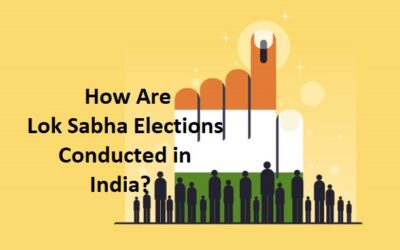Social Science Project On Gender Inequality In India
Social Science Project On Gender inequality in India remains a pressing issue. Gender inequality is a persistent problem. Cultural, social, and economic factors have resulted in unequal treatment and opportunities for women. Women in India often face discrimination and bias throughout their lives, from the moment they are born to their education, employment, and health. Efforts are being made to address gender inequality in India. However, there is still much work to be done to eliminate gender inequality in India. To understand Gender Inequality in India and to Address deep-rooted cultural attitudes and changing social norms let’s dive into a project on gender inequality in India to achieve a more equitable society.
Introduction:
Gender inequality refers to the unequal treatment or perceptions of individuals based on their gender. It is the disparity between individuals of different genders in access to opportunities, rights, privileges, and resources. This can manifest in many ways, including unequal pay, limited access to education and job opportunities, lack of political representation, and unequal treatment in the criminal justice system.
Gender inequality has been a persistent issue throughout human history and continues to be a major challenge in many societies today. Despite significant progress in recent decades, women and other gender minority groups still face significant barriers to achieving equality in many areas of life.
Tackling gender inequality requires addressing the systemic and cultural factors that contribute to its persistence, such as gender stereotypes and discriminatory laws and policies. It also requires challenging and changing attitudes and behaviors that perpetuate gender inequality, such as sexism and misogyny. Addressing gender inequality is essential for promoting social justice and equality and for realizing the full potential of all individuals, regardless of gender.
GENDER INEQUALITY IN INDIA
Gender inequality is a major issue in India, where cultural, social, and economic factors have combined to perpetuate the marginalization of women and other gender minority groups. Despite some progress in recent years, Indian women still face significant barriers to equal participation in many areas of life.
One of the most visible forms of gender inequality in India is the significant gender gap in literacy rates, with fewer women able to access education and fewer still able to attain higher levels of education. This, in turn, contributes to unequal employment opportunities and wages for women, who are often relegated to low-paying, informal sector jobs.
Women in India also face discrimination and violence in their homes and communities, including domestic abuse, rape, and female infanticide. The country has one of the highest rates of maternal mortality in the world.
Efforts to address gender inequality in India have been ongoing for many years, but progress has been slow. This is due in part to the deeply ingrained cultural attitudes and gender stereotypes that persist in many parts of the country. Addressing these attitudes and changing social norms will be key to achieving greater equality for women in India.
ROOT CAUSES
There are several root causes of gender inequality in India, including:
Patriarchy and gender-based discrimination
Patriarchy, or the male-dominated social and cultural norms, is deeply ingrained in India, leading to gender-based discrimination and the unequal treatment of women and girls.
Lack of education
A lack of access to education, especially for girls, perpetuates gender inequality by limiting their opportunities and limiting their ability to participate fully in society.
Economic disparity
Women in India are often confined to low-paying, informal sector jobs, leading to a significant gender pay gap and economic insecurity.
Unequal property rights
Women in India often have limited access to property and inheritance rights, making it difficult for them to attain financial independence and security.
Domestic violence
Domestic violence, including physical, emotional, and sexual abuse, is a widespread issue in India and a significant barrier to gender equality.
Female infanticide and sex-selective abortion
The practice of female infanticide and the prevalence of sex-selective abortion have contributed to a significant imbalance in the gender ratio in India.
Societal attitudes and beliefs
Gender stereotypes and discriminatory attitudes and beliefs perpetuate gender inequality and prevent progress in achieving equality for
women and girls in India.
Addressing these root causes will be crucial in overcoming gender inequality in India and promoting greater equality and social justice for all
individuals, regardless of gender.
WAS THERE GENDER INEQUALITY IN ANCIENT INDIA?
Gender inequality has been a persistent issue throughout human history, and ancient India was no exception.
While ancient Indian society was characterized by a rich cultural and spiritual heritage,
it was also shaped by patriarchal norms and practices that disadvantaged women and other gender minority groups.
In ancient India, women faced significant barriers to education and employment.
They were often confined to traditional roles in the household and relegated to secondary status in society.
Moreover, the caste system and other forms of social stratification further compounded the marginalization of women.
However, there are also examples of women who achieved significant status and influence in ancient Indian society, such as royal women,
poets, and mystics. Additionally, some ancient Indian texts, such as the Vedas, contain teachings that promote gender equality and respect
for all individuals, regardless of gender.
Although ancient Indian society was marked by patriarchal norms and practices that perpetuated gender inequality, there were also
examples of women who achieved prominence and cultural expressions that promoted equality. Nevertheless, it is important to acknowledge
that the persistence of patriarchal norms and gender-based discrimination has been a challenge throughout human history, including in
ancient India.
METHODS TO RESOLVE GENDER INEQUALITY
Legal intervention
India has a number of laws that aim to prevent gender discrimination, such as the Constitution of India, The Equal Remuneration Act 1976,
and The Sexual Harassment of Women at Workplace (Prevention, Prohibition, and Redressal) Act, 2013. It is important to enforce these laws
and provide legal aid to those who have suffered from discrimination.
Awareness campaigns
There needs to be a widespread awareness campaign to educate people about gender discrimination and its harmful effects.
This will help to change the mindsets and attitudes of people toward women.
Gender sensitivity training
Training programs for employees in both private and public sectors should be made mandatory to sensitize them towards gender equality
and to prevent discrimination.
Encouraging female education
Education is an important tool in breaking down gender barriers and empowering women.
By providing equal access to education, women will be equipped with the skills and knowledge needed to compete in the job market and lead
more fulfilling lives.
Promoting gender diversity in the workplace
Companies and organizations should promote gender diversity in the workplace by providing equal opportunities and incentives for women
to pursue their careers. This will help to break down the gender barrier in the job market.
Providing support to victims
Support should be provided to those who have suffered from gender discrimination, including counseling and legal aid.
Encouraging male involvement
Men play a crucial role in promoting gender equality and ending discrimination against women.
By engaging men and boys in the fight against gender discrimination, we can work towards a more inclusive and equal society.
EXAMPLES OF GENDER INEQUALITY IN INDIA
Unequal access to education
Despite government initiatives to provide education to all children, there is still a significant gender gap in enrollment and completion rates,
especially among girls from rural and marginalized communities.
Wage disparities
Women in India continue to earn less than men for the same work, with the gender pay gap estimated to be around 27%.
Domestic violence
Domestic violence against women, including physical, emotional, and sexual abuse, is a serious issue in India.
This is often rooted in patriarchal attitudes and a lack of legal enforcement.
Lack of representation in politics
Women are underrepresented in Indian politics, with only 14% of seats in the Lok Sabha (the lower house of the Indian Parliament) being
occupied by women.
Sexual harassment at the workplace
Women in India face sexual harassment and discrimination in the workplace, which limits their opportunities for career advancement and
reduces their motivation to participate in the workforce.
Unequal property rights
Women in India often face discrimination when it comes to property rights, with inheritance laws being heavily biased in favor of men.
Female infanticide and sex-selective abortion
Despite laws forbidding sex-selective abortion and female infanticide, these practices continue in some parts of India, leading to a skewed
gender ratio and a reduction in the number of women in society.
ARE WOMEN RESPONSIBLE FOR GENDER INEQUALITY IN INDIA?
No, women are not responsible for gender inequality in India. Gender inequality is a complex issue that is driven by a multitude of factors, including cultural attitudes, socioeconomic factors, and systemic biases.
The following are some of the reasons why women are not responsible for gender inequality in India:
Patriarchy
India is a patriarchal society, where men hold a disproportionate amount of power, and women are often subjected to traditional gender roles
and expectations. This creates a power imbalance that perpetuates gender inequality.
Societal attitudes
Deep-rooted cultural attitudes towards women, including discrimination and prejudice, contribute to gender inequality. This includes
attitudes toward women’s education, participation in the workforce, and their role in society.
Economic factors
Women are often denied equal economic opportunities, including access to education and employment, which limits their ability to advance and earn a living.
Lack of legal enforcement
Despite the presence of laws designed to prevent gender discrimination, these laws are often not enforced, and women are not able to access
justice and protection.
Systemic biases
Gender bias is present in many aspects of society, including the workplace, the media, and politics.
This bias reinforces stereotypes and reinforces gender inequality.
Education and media
The lack of representation and portrayal of women in education and media reinforces harmful gender stereotypes and perpetuates gender
inequality.
History of discrimination
Women have faced centuries of discrimination and prejudice, which has led to a systemic imbalance of power and limited opportunities for
women. This history continues to shape the present and contributes to gender inequality.
Therefore, It is important to acknowledge that women are not responsible for the issues of gender inequality but rather, they are the ones
who is most affected by it and faces the consequences of it on a daily basis?
STEPS TAKEN TO ACHIEVE GENDER EQUALITY IN INDIA
Education
Providing equal education opportunities to all genders is essential in promoting gender equality.
This includes promoting girls’ education, breaking down gender stereotypes in schools, and providing education on gender equality and
women’s rights.
Employment
Encouraging women’s participation in the workforce, providing equal pay for equal work, and creating a safe and inclusive work environment
for all genders is crucial in promoting gender equality.
Healthcare
Ensuring access to quality healthcare for all genders, with a special focus on maternal health, is important in promoting gender equality.
Legal reforms
Amending laws that discriminate against women, such as the discriminatory provisions in the Hindu Succession Act, and enforcing laws that
Protecting women’s rights, such as the Prevention of Domestic Violence Act, is crucial in promoting gender equality.
Media representation
Encouraging a positive and accurate representation of women and different genders in the media is important in promoting gender equality
and challenging gender stereotypes.
Political representation
Encouraging the participation of women and members of marginalized genders in political leadership positions is crucial in promoting gender
equality and ensuring that their voices and concerns are heard in decision-making processes.
Community action
Building a supportive community that promotes gender equality and challenges gender-based violence and discrimination is essential in
promoting a culture of gender equality. This can be done through community-based programs and grassroots movements, as well as through
active engagement of men and boys in promoting gender equality
CONCLUSION
In conclusion, gender inequality remains a persistent issue in many societies, including India. It manifests in various forms, including unequal
access to education, employment, and healthcare, as well as unequal representation in politics and the media. Addressing gender inequality
requires a comprehensive and sustained effort from all sectors of society, including government, civil society, media, and individuals. This
involves challenging gender stereotypes, promoting gender equality in all aspects of life, and ensuring that the rights of all genders are
protected and upheld. Only through sustained and collective action can we create a more equal and just society for all genders.
You may like to read
गोंड प्रजाति में सती प्रथा: जो TEXT BOOKS में नहीं पढाई जाती





0 Comments